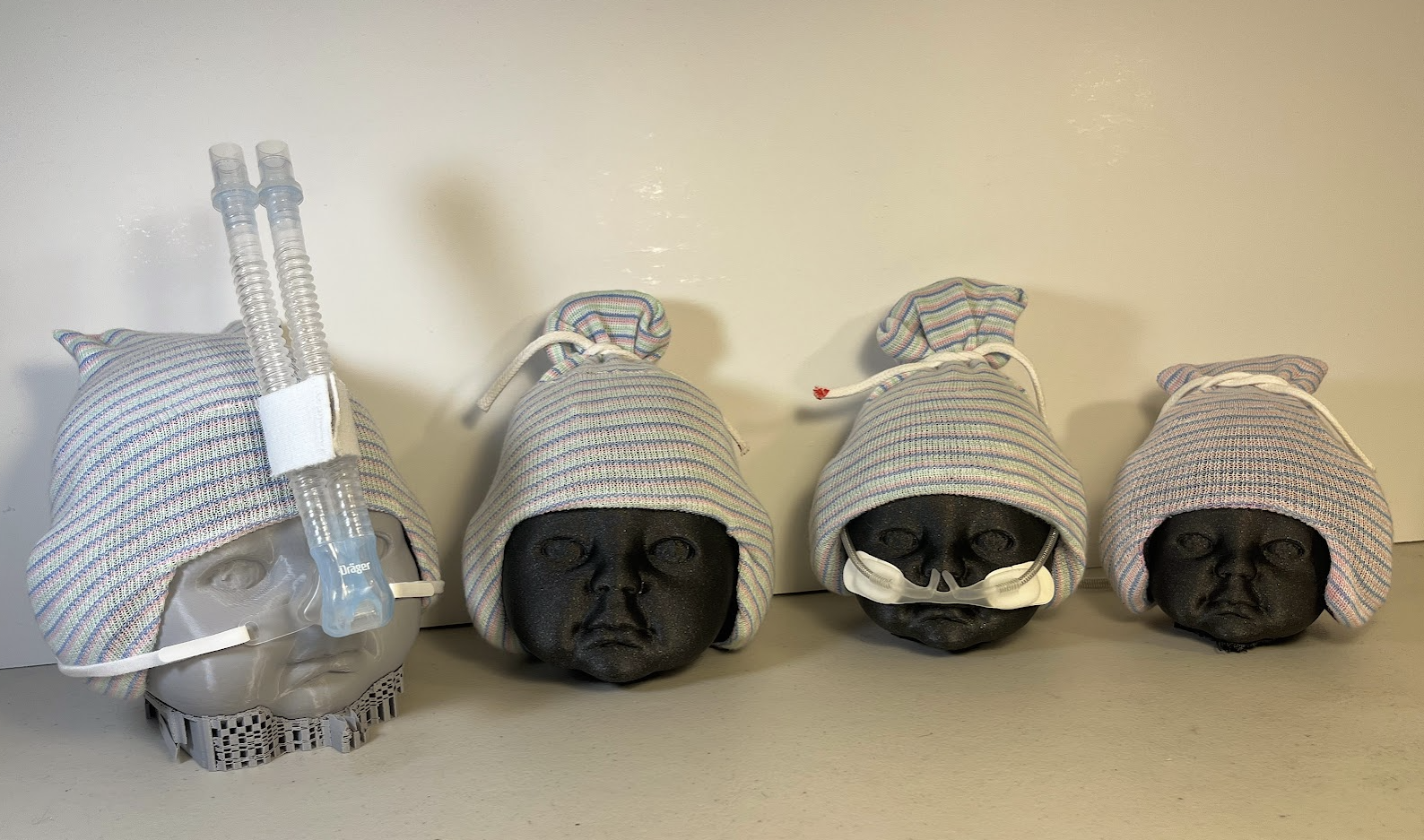Supporting Families Through Sound: The Story Behind the Sonura Beanie
Bollinger Digital Fabrication lab team helps improve product prototype
Sophie Ishiwari and Gabby Daltoso, recent bioengineering graduates from the University of Pennsylvania and winners of the 2023 President’s Innovation Prize, are the creators of the Sonura Beanie—a groundbreaking device designed to support infants in the neonatal intensive care unit (NICU). The beanie provides auditory protection while fostering a vital connection between infants and their parents. It filters out the harsh alarms of the NICU and enables families to send recordings of songs, stories, or even their heartbeat to their child when they cannot be physically present.
The team had been focused on refining the beanie’s earcup, which needed to reduce noise while fitting comfortably on an infant’s head. What began as a simple concept using two plastic bowls evolved into a fully functional prototype with multiple features. Sophie and Gabby first brought their design to the Bollinger Digital Fabrication Lab. The initial prototypes were 3D printed in Formlab’s Elastic 50A Resin but the team quickly realized the material was too stiff and uncomfortable for infant use.
To overcome this challenge, the team collaborated with Visualizationist Lexi Voss and 3D intern Kalvin Matischak to design custom molds in-house. These molds allowed the team to cast soft silicone foam earcups that are gentle on the skin while securely housing the auditory device. The lab also produced molds in multiple sizes to accommodate different head shapes and allow for further testing and iterative design.
Now, the Sonura Beanie is preparing for its first hospital trial, slated to begin in the coming month. As the project moves forward, the team is seeking funding to support their initial launch. By the end of next year, they hope to be making a meaningful impact for families throughout Philadelphia and beyond.
To learn more or connect with the Sonura team, visit sonuracare.com or reach out to gabby@sonuracare.com.

|
|

|

|

|

|
